Colloquia for Fall 2023
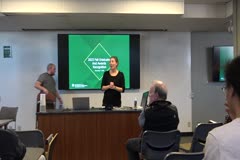
Dietrich and Shrake-Culler Awards Recognition
December 07, 2023
Various
Hosted by Department
Event recognizing fall graduates and recipients of the Dietrich and Shrake-Culler Awards.
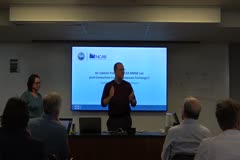
An Update From the NCAR MMM Lab (And Convective Cross-Tropopause Exchange!)
November 30, 2023
Gretchen Mullendore
Hosted by Jim Hurrell
This will be a mixed seminar, with the first half focused on high level updates on the research and model/tool development being conducted by the Mesoscale and Microscale Meteorology (MMM) Lab at NCAR. This will include updates on the Model for Prediction Across Scales (MPAS), the status of the Weather Research and Forecasting (WRF) model, MMM data assimilation efforts (i.e., MPAS-JEDI), and…
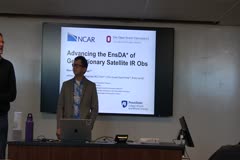
Advancing the Ensemble Data Assimilation of Geostationary Satellite Infrared Radiances
November 16, 2023
Joseph Chan
Hosted by Peter Jan van Leeuwen
The advent of modern geostationary satellite infrared (GeoIR) imagery has ushered in a new era in atmospheric observations. Tremendous progress has been made in using GeoIR observations with ensemble data assimilation (EnsDA) to improve the analyses and forecasts of convective events. This progress also highlighted the weaknesses of current EnsDA methods. This seminar is broken into three…
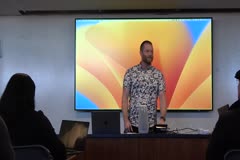
Fall 2023 ATS Faculty Jamboree
November 09, 2023
Melissa Burt, Patrick Keys, Maria Rugenstein, Steve Miller
Hosted by Department
ATS faculty will give brief overviews of their research.
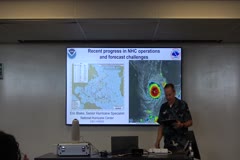
Recent progress in NHC Hurricane Operations and Forecast Challenges
November 02, 2023
Eric Blake
Hosted by Michael Bell
This presentation will discuss NHC hurricane operations during 2023, including how the hurricane specialists make the TC forecasts on a 6-hour cyclone and recent progress noted. Specific forecast challenges will be discussed, especially Hurricane Otis.
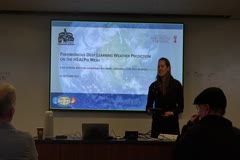
Toward Replacing Current NWP with Deep Learning Weather Prediction and Extensions to a Full Earth-System Model
October 26, 2023
Dale Durran
Hosted by Libby Barnes
We compare the performance of a global deep-learning weather-prediction (DLWP) model with reanalysis data and forecasts from the European Center for Medium Range Weather Forecasts (ECMWF). The model is trained using ECMWF ReAnalysis 5 (ERA5) data with convolutional neural networks (CNNs) on a HEALPix mesh using a loss function that minimizes forecast error over a single 24-hour period.…
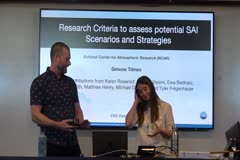
Research Criteria to Assess Potential SAI Scenarios and Strategies
October 19, 2023
Simone Tilmes
Hosted by Pat Keys
With global and regional surface temperatures already reaching unprecedented highs, stratospheric aerosol intervention (SAI) is often described as the only method that could be introduced quickly as a form of a stop-gap measure to slow or reverse the projected rise in global surface temperatures until atmospheric greenhouse gas concentrations are stabilized. However, limited and often…
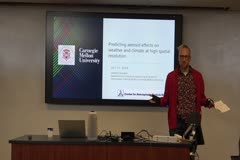
Predicting Aerosol Effects on Weather and Climate at High Spatial Resolution
October 12, 2023
Hamish Gordon
Hosted by Jeff Pierce
Aerosol-cloud interactions are a key source of uncertainty in accurately simulating how Earth's radiative balance is affected by human activities. Clouds are very variable on small spatial scales, so simulations of weather and climate require high spatial resolution to represent them. In this seminar I will discuss how we have developed and applied the weather and climate model of the UK Met…
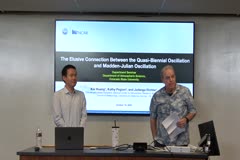
The Elusive Connection Between the Quasi-Biennial Oscillation and the Madden-Julian Oscillation
October 10, 2023
Kai Huang
Hosted by Dave Randall
The Madden-Julian Oscillation (MJO) is the dominant intraseasonal variability in the tropical troposphere with a robust eastward propagation. In the observations, MJO ’s amplitude and propagation are significantly modulated by the Quasi-Biennial Oscillation (QBO), an interannual variability in the tropical stratosphere. The MJO becomes stronger and is more likely to propagate across the…
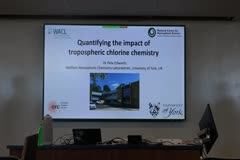
Wolfson Atmospheric Chemistry Labs and the UK National Centre for Atmospheric Science
October 05, 2023
Pete Edwards
Hosted by Emily Fischer
Gas phase oxidants control the concentrations of important climate and air pollutants such as methane, ozone and particles. Accurate representation of this oxidation chemistry in computational models is paramount to our ability to predict and understand past, present and future changes to the Earth system. Over recent decades there have been continual suggestions that the chlorine atom may be…
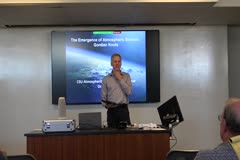
The Emergence of Atmospheric Science Cutting the Gordian Knot of Meteorology
October 02, 2023
James R. Fleming
Hosted by Eric Maloney
Atmospheric researchers have long attempted to untie the Gordian Knot of meteorology — that intractable and intertwined tangle of observational imprecision, theoretical uncertainties, and non-linear influences — that, if unravelled, would provide perfect prevision of the weather for ten days, of seasonal conditions for next year, and of climatic conditions for a decade, a century, a…

Quantifying How Cloud Morphological Changes Contribute to the Interannual Cloud Feedback Based on MODIS and ISCCP Satellite Observations
September 28, 2023
Ivy Tan
Hosted by Christine Chiu
The surface temperature-mediated change in cloud properties, referred to as the cloud feedback, continues to dominate the uncertainty in climate projections. A larger number of contemporary global climate models (GCMs) project a higher degree of warming than the previous generation of GCMs. This greater projected warming has been attributed to a less negative, i.e. less damping cloud feedback…
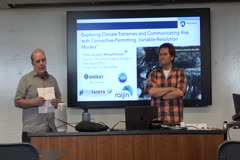
Exploring Climate Extremes and Communicating Risk with Convective-Permitting, Variable-Resolution Models
September 21, 2023
Colin Zarzycki
Hosted by Dave Randall
In this presentation, recent projects completed using both the Community Earth System Model (CESM) and the Energy Exascale Earth System Model (E3SM) at km-scale grid spacings are demonstrated. While there is a great deal of ongoing effort to support these model configurations for global model assessments in the coming decades, it is shown that actionable climate science is permitted with…
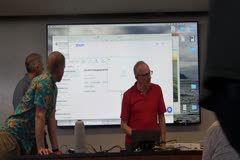
Teaching Climate Science Around the World
September 14, 2023
Scott Denning
Hosted by Department
Semester at Sea is a floating college campus currently headquartered at CSU that has sailed nearly every semester since 1963. A typical voyage includes 500 undergraduate students, 35 faculty that teach 70 courses, faculty families, and some “lifelong learners.” About half the semester is spent on long ocean crossings, which is when we teach. The other half is spent in over a dozen countries…
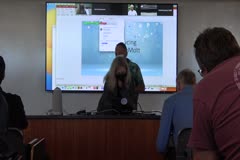
Perspectives From a Career in Ice Nucleation Research at Colorado State University
September 08, 2023
Paul DeMott
Hosted by Sonia Kreidenweis
I will share some personal and scientific perspectives on a career and field of study that is the only one I have known in 44 years since leaving the state of my birth. Atmospheric ice nucleation was an enigma when I arrived at Colorado State University, and in many ways it remains so. However, because of its reach and implications for climate and water resources, it has our full attention now…
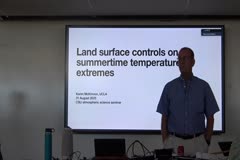
Land surface controls on the near-surface climate
August 31, 2023
Karen McKinnon
Hosted by Maria Rugenstein
The coupling between land and atmosphere influences the near-surface climate. However, the role of the land surface varies spatially, and it is often difficult to disentangle the coupled interactions. In this talk, I will present recent work out of my group that aims to improve our understanding of changes in the near-surface climate due to land-atmosphere interactions. First, we explore the…
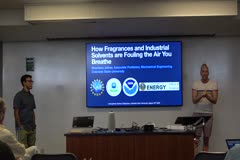
How Fragrances and Industrial Solvents are Fouling the Air You Breathe
August 24, 2023
Shantanu Jathar
Hosted by Jeff Pierce
Secondary organic aerosol (SOA), formed from the oxidation of volatile organic compounds (VOCs), is an important fraction of the atmospheric aerosol mass (or fine particulate matter) in urban environments, with implications for climate, human health, and visibility. Over the past decade, the SOA fraction of the urban aerosol mass has been increasing despite substantial reductions in VOC…
